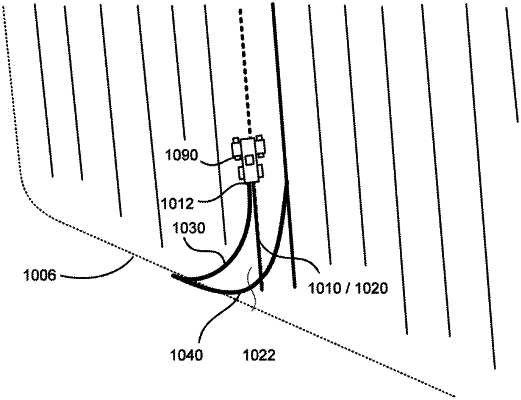| CPC B60W 60/0011 (2020.02) [A01B 79/005 (2013.01); B60W 60/0025 (2020.02); G06V 20/56 (2022.01); B60W 2300/15 (2013.01)] | 19 Claims |

|
1. A method of path planning for an autonomous vehicle, the method comprising:
receiving a request for a turn of a vehicle from a current swath to a next swath in a work area, the next swath being immediately adjacent to the current swath in the work area, the vehicle having an implement attached thereto, and the work area defined by a geofence and having a headland at a periphery thereof, the headland having a width extending between the geofence and an inner boundary of the headland, the width of the headland being approximately an integer multiple of a width of the implement, the headland characterized by a guidance line therethrough, the guidance line offset from the inner boundary of the headland by approximately one half the width of the implement;
in response to receiving the request, receiving information of the current swath, information of the next swath, information of the guidance line, and information of a current location of the vehicle;
determining a turn trajectory of the turn based on the information of the current swath, the information of the next swath, and the information of the guidance line, the turn trajectory including one or more segments, wherein the turn trajectory has a turn trajectory beginning position located within the work area, wherein the turn trajectory comprises:
a first segment that starts from the current location of the vehicle in the work area, follows the current swath in a first direction, and ends at an end position of the current swath using a move- to-end-of-swath-before-turn (MESBT) feature,
a second segment that starts from the end position of the current swath and ends at the turn beginning position, wherein the second segment overlays the first segment and follows the current swath in a second direction opposite to the first direction,
a third segment that starts from the turn beginning position and executes a turn in the first direction to end on the guidance line in the headland, and
a fourth segment that starts on the guidance line in the headland and executes a turn in the second direction to end on the next swath;
outputting the turn trajectory and the MESBT trajectory to a control system of the vehicle for executing the turn; and
operating the vehicle based on the turn trajectory.
|